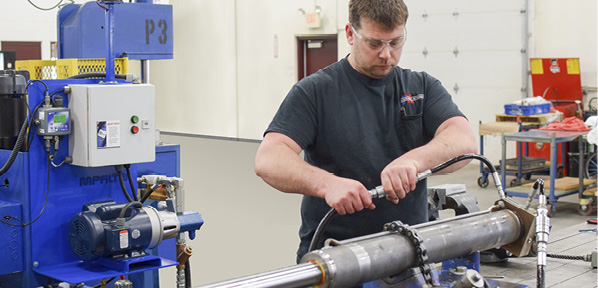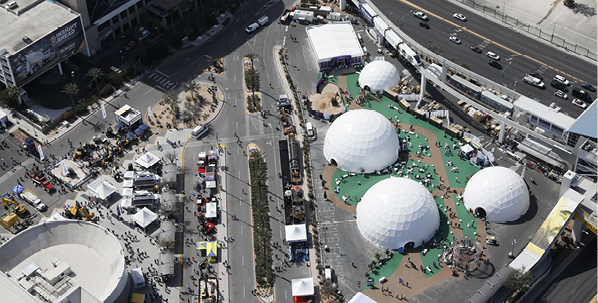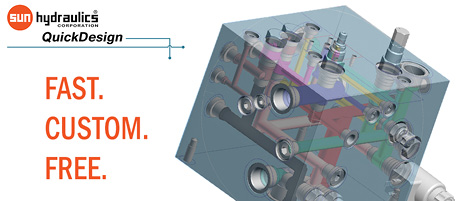Sheet Metal to Egg Crate Foam – Selecting the Right Vacuum Cup
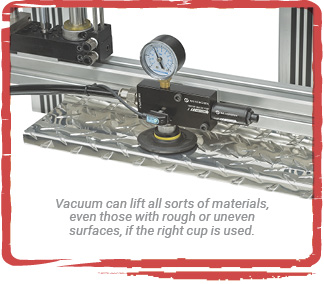 By Mike Parzych, Product Marketing Manager, IMI Norgren
By Mike Parzych, Product Marketing Manager, IMI Norgren
Vacuum – the difference in atmospheric pressure on one side of a vacuum cup and the other – has been used in robotics and traditional manufacturing for decades to move objects and materials. Now collaborative robots (cobots) are making automation more affordable and accessible for smaller, more versatile operations like mixed product assembly or order fulfillment, creating more opportunities than ever to use vacuum. And where there is vacuum, there are vacuum cups to connect the vacuum source with the object being moved. So how does one select the right cup?
Force equals pressure times area
To begin, there are three basic factors to consider when using vacuum: force, pressure, and area. Force is the weight of the object being moved, multiplied by a safety factor. Pressure is the expected vacuum level – the negative pressure or suction created by the pump. Area is the size of the contact between the vacuum cup and the object. This is where vacuum exists. The basic calculation, Force = Pressure x Area, defines the starting point for choosing a cup and using vacuum to move a load.
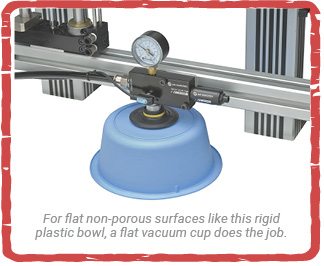 Cup size and type
Cup size and type
Cups sizes are identified by cup diameter, so once the desired area is known, refer to manufacturers’ specifications for the appropriate cup size. Differences in application requirements can guide a decision between using a large diameter cup with a lower vacuum level or a smaller cup with a large vacuum pump (for example, to meet space or size limitations).
Cup types include bellows, multi-bellows, round oval, flat with or without cleats, and cups with removable fittings or permanent fittings. To choose the right type of cup, consider the characteristics of the object being picked up. Is it non-porous or porous? Is it flat, irregularly shaped or flexible? In general, use flat cups for flat objects and bellows cups for irregular objects. Every situation is unique, but some examples of typical materials in industrial applications serve as a starting point.
 Non-porous objects
Non-porous objects
To use vacuum for picking up objects with solid, non-porous surfaces, knowing force, pressure, and area is enough. The vacuum is created and contained between the cup and the object and full force is achieved and maintained until the vacuum is released. Examples of non-porous materials include steel, glass, laminated chipboard, and rigid plastic. Flat cleated cups are widely used for non-porous applications because the rigid, low-profile design means they resist peeling away. Some non-porous objects, for example large sheets of thin metal, may bend slightly. In a case like this, using multiple pliable bellows cups ensures that all the cups make full contact with the sheet as it bends.
Porous or uneven surfaces
These may include corrugate, woven materials, or objects with extremely rough or uneven surfaces. When handling porous materials, it is important that the flow path between the object and the vacuum pump is large enough to allow the pump to draw in the air that leaks through the surface (e.g., cheesecloth) or from gaps between the cup and the surface (e.g., corrugated cardboard). Because no complete seal is formed between the cup and the object, free air will continue to flow through the pump.
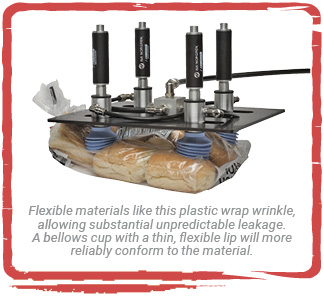 Flexible materials
Flexible materials
When handling flexible materials, for example wraps used in packaging, it is critical that the pump cup, fitting, and vacuum line are large enough to handle the required flow. Flexible materials wrinkle, causing large, unpredictable leak paths. The cup and pump must be sized to accommodate a high leak rate. The bore of the fitting must be close to half the diameter of the cup to allow for large flows.
The good news is that, typically, flexible materials are not heavy. Calculating cup holding force precisely may not be required. A cup with a very thin, flexible lip will more easily conform to the wrinkled material. Multi-bellows cups work well because they are so flexible. With so many variables involved with flexible materials, consider sending a sample of the material to a cup supplier for testing so they can make pump and cup recommendations.
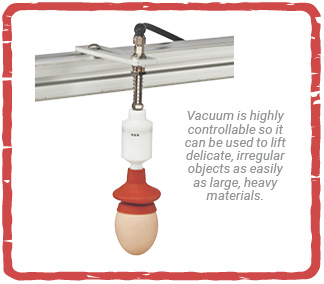 Versatility
Versatility
Vacuum cups can be made from a variety of materials. Some popular materials include vinyl, polyurethane, chloroprene, nitrile, silicone or natural rubber. Each material has different working temperatures, durometers, and resistance to oil or water.
Vacuum is extremely versatile and can be used to do things no other technology can do. It is highly controllable and since it exerts negative pressure instead of pushing or pressing, it can be used to move delicate or irregular materials as well as large, heavy objects. Today’s wide variety of cup designs, sizes, and materials means that designers can access the advantages of vacuum for a wider variety of applications than ever before.

